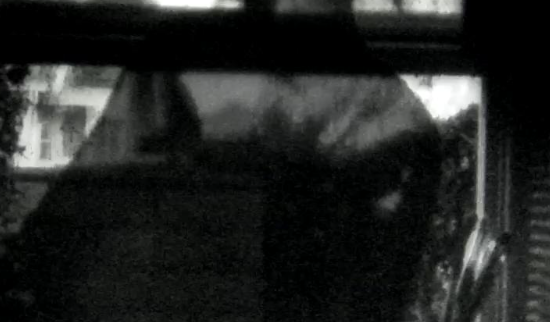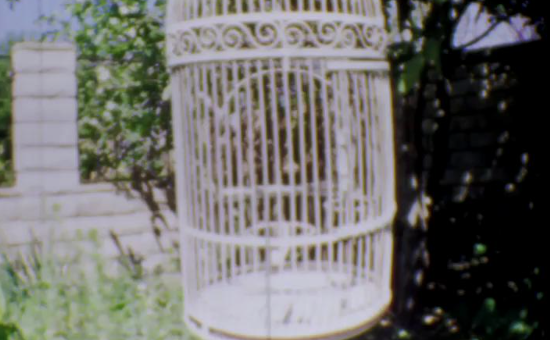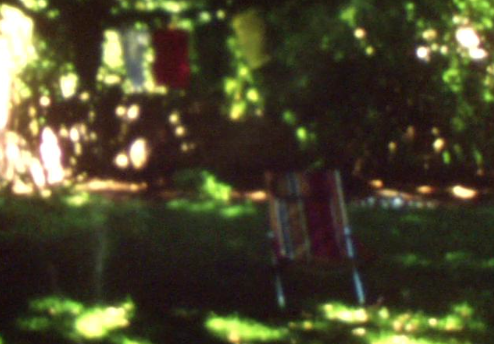Vittoria is a cinematographer based in Los Angeles and Italy, who has worked in the US and various countries in Europe and Asia. She was born in Venice, Italy and studied Integrated Design at Parsons the New School for Design in New York City where she explored a variety of mediums, including photography, fashion, graphic design, video and art installation. Through these experiences, she developed a passion for filmmaking, which ultimately led her to pursue a career in cinematography. She moved to Los Angeles to attended UCLA’s School of Theatre, Film and Television and graduated with an MFA in Cinematography. Her work has screened at film festivals and art galleries around the world: ‘Hygiena’ (director: Amanda Vincelli) was featured at the ROS International Film Festival (Spain), the Hunter Shaw Fine Art Gallery and Femmebit (LA), and ‘You See the Woman’ (director: Siru Wen) at the Arthouse Asia Film Festival (India) the Korean Cultural Center (LA), The Aggregate Space Gallery (Oakland) and the Biennale Larnaca (Greece). As a storyteller, Vittoria is drawn to high-concept narratives and subjects dealing with the surreal and absurd aspects of life, and her background in design informs a multi-disciplinary approach to her craft. Aside from her work in cinematography, she is currently in post-production on her second directorial effort, the short film ‘Dye-Red,’ about the dysfunctional relationship between two roommates and best friends. The short film was a project of ‘Hausred,’ a collective Vittoria co-founded with friends and peers based on their shared love of cinema and good wine.
An Interview with Vittoria Campaner:
 In your bio, you mention studying at the Parsons School of Design prior to pursuing cinematography. How has your training there in photography, fashion, graphic design, and video and art installation affected your process as a DP?
In your bio, you mention studying at the Parsons School of Design prior to pursuing cinematography. How has your training there in photography, fashion, graphic design, and video and art installation affected your process as a DP?
At Parsons, I studied Integrated Design – a major that may appear vague at first, but that gave me both a practical and theoretical knowledge of many art forms, and taught me to think in a multidisciplinary manner, even though the focus at the time was on Fashion Design. I worked on many fashion-oriented projects that often required the integration of other crafts, such as graphic design, photography, and video. I began by making fashion videos and later ventured into more personal and experimental pieces, exploring subjects that interested me and that were unrelated to fashion. At the same time, I became friends with many emerging filmmakers and began to work on their films in various capacities, first as costume designer and later as production designer. Then I learned about lighting and started working as a gaffer. I was gradually discovering my voice.
As a DP, I believe my background in Design has greatly shaped my aesthetic sensibilities and taste. I tend to favor symmetry, minimalism and abstraction in the way I frame, light and color a scene, though of course much of this ultimately depends on the directors I work with and the requirements of the story. I also draw inspiration from a variety of sources outside of the realm of cinema, such as designers or photographers I admire.
But Design has also influenced my pre-production process. For example, for every project that I work on, I create a detailed cinematographer’s lookbook, which differs from the director’s lookbook and which I use both to guide myself through the overall feeling of a film and to communicate with my team. I like to pre-visualize editing patterns, camera movement and narrative rhythm as thoroughly as possible, even when I work with a director who prefers a more spontaneous approach. In this sense, making a film is, to me, not unlike Fashion Design: you begin with a concept and a theme and, before constructing any garment, you set down on paper the story you want to tell. Lookbooks also help create a kind of flow, an energy which works on you subconsciously as you find your way through a project.
 When deciding to shoot a project, what are you looking for? What types of stories excite you most?
When deciding to shoot a project, what are you looking for? What types of stories excite you most?
I try to follow my instincts about both the script and the director. If I like a script, it’s because I have found in it something that I connect with emotionally and that can be expressed in a visually intriguing way. There are certain tendencies. For example, I notice that I am often drawn to stories featuring strong female characters on a journey to explore their psyche and come to some kind of understanding about themselves, as well as stories about friendship and/or the breaking of friendships. I am also drawn to magical realism and absurdity. But more than anything else I like subtlety and nuance. I want the storytelling to be delicate, but with the occasional flourish or extravagance which I sometimes playfully describe as a ‘touch of Pop.’
As for the director, I try to understand their vision for the project and to gauge their tastes. In explaining their vision, a director can make me see things beyond the script, things they have in mind that cannot be expressed on paper and will only materialize in the final product. The quality, clarity and originality of a director’s vision are determining factors, as is their passion for the story they set out to tell.
 Would you discuss your approach to creative collaboration with the director during pre-production and while on set?
Would you discuss your approach to creative collaboration with the director during pre-production and while on set?
Communication is key to creative collaboration. The initial conversations I have with a director, where we share interests and tastes and discuss the story only in general terms, are very important. While still maintaining professionalism, it is essential to get to know one another. From my point of view, the more I know the person I am working with, the better I understand their artistic mind and vision for the project, the better I can serve the story. It is also important for me to understand the specific ways in which directors like to work, their approach, their habits and their practices, as it is for them to understand mine, in order to find both a common ground and a language to communicate in. Knowledge of one’s collaborators also facilitates trust.
No matter how effectively a director communicates while on set, it is very important for me to know their intentions as well as possible beforehand. I like to have as many conversations as possible in pre-production and to be involved in many other production decisions – such as scouting and helping to choose locations. I like to draw detailed storyboards, lighting diagrams and, when possible, to chart editing patterns, so as to have a clear idea of how the film is going to be cut and how each shot should work within the whole. I always try to encourage the directors I work with not to rely on coverage (unless necessary) and to cut the film already in their minds prior to shooting.
The personal connection that is established between DP and director in pre-production has a direct effect on the on-set collaboration, where money, time and stress naturally tend to make communication difficult. Having reached a point of comfort in knowing how one another’s mind works helps to solve problems faster.
 What is the biggest challenge you’ve faced pursuing cinematography? Have you encountered different hurdles working as a DP in various parts of the world?
What is the biggest challenge you’ve faced pursuing cinematography? Have you encountered different hurdles working as a DP in various parts of the world?
Every project has its unique challenges, and each problem tends to feel like the worst at the moment it occurs. Some of the biggest challenges for me occurred on those sets for which I had to travel far and the production could not bring anyone from my usual trusted camera and G&E crew. Those decisions had to be made for me. Of course, film crews change all the time, yet most DPs have a select group of trusted collaborators, and that group becomes a little like a family. This is not to say I didn’t end up meeting new collaborators with whom I worked very well and would work again – in fact I have so far been extremely lucky in that respect. But it often took some time for us to bond. I have shot films in countries where female DPs are uncommon, and in many of those cases I found it hard at first to gain my crew’s trust and respect, though when I eventually did, we worked really well as a team. Shooting in different countries also means adapting to different modes of production, schedules, set protocols and working hours. As with all challenges, these experiences have taught me flexibility, resourcefulness and self-reliance.
 When developing the look for a film, where do you find inspiration?
When developing the look for a film, where do you find inspiration?
I read the script and highlight passages from it that may trigger visual ideas. I try to distill the salient emotions from each scene and think about how framing, light and color can express those emotions as well as the underlying themes. I try to think both in terms of individual scenes and the story at large. As I mentioned, I make my own lookbook, separate from the director’s, and collect images and patterns from various sources, from movie stills to photographs to paintings and even graphics. I compare my lookbook with the director’s in the attempt to trigger further ideas in one another. Generally, inspiration tends to come in a mix of emotional and intellectual ideas, meaning ideas that in some cases respond to logic and in others to pure instinct.
 Are there any artists you especially admire?
Are there any artists you especially admire?
I grew up in Venice, Italy, and as such my identity has been intimately and profoundly shaped by the rich history and art of that city, my hometown. No matter what project I work on, I always in some way refer back to the Venetian Renaissance masters like Titian and Tintoretto, particularly for the primacy they gave to color and light over outline (the opposite of the Florentine painters). For similar reasons, I am drawn to Baroque painting and sculpture for its chaos and energy, even though it might appear as miles away from the minimalism I normally favor in my own work. But I often find that I am drawn to certain things and their opposites equally.
In the modern era, I admire Rene Magritte and Max Ernst for their surrealism and dreamlike imagery, and Francis Bacon for the emotional intensity of his paintings. While I studied Fashion, I was greatly drawn to the surrealist-inspired work of designer Elsa Schiaparelli at the same time as I was to the minimalist style of Martin Margiela, who made structural garments that emphasized cut and shape over detail and ornament.
In Cinema, amongst many other influences, I admire the work of Miklos Jáncso, an Hungarian director from the 1960s who seems to have combined these two tendencies I have described within myself into a style called ‘ornamental minimalism:’ he was in fact a master of the so-called ‘long take,’ combining elaborate choreographies and complex camera movements with the absence of cuts and editorial manipulation. I have referenced his film ‘Electra, My Love’ in many of my lookbooks.
 Looking forward, what are your hopes for your career?
Looking forward, what are your hopes for your career?
I am hoping to grow as a DP and have the opportunity to work with many great directors, especially female directors, and to help tell challenging and relevant stories. I also would like to direct my own projects, something I have already been pursuing on the side for some time. I recently completed a short film I wrote titled ‘Dye-Red,’ which explores the troubled relationship between two roommates who are also best friends – it will premiere in October at the Nashville Film Festival. Aside from being a means of self-expression, directing has also enriched my work as a cinematographer by helping me better understand the challenges a director faces.
Contact Info:




No Comments